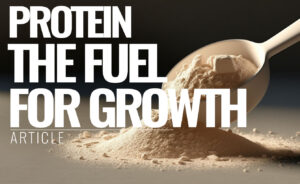
Revive Stronger
Protein: The Vessel for Growth
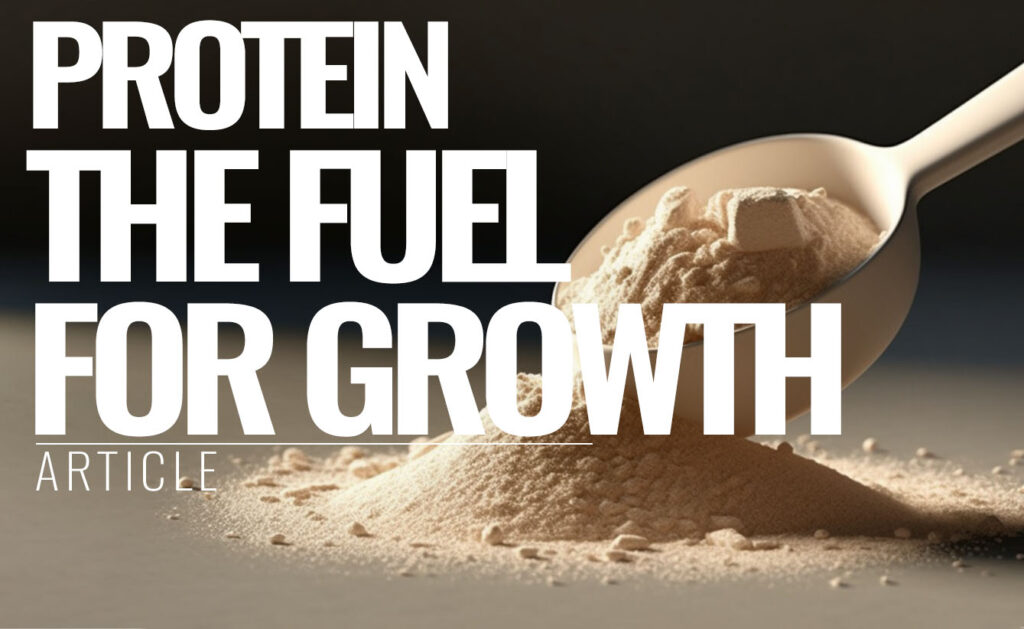
Table of Contents
Macronutrients
It is likely that if you are reading this, you in part have a fairly good understanding of macronutrients or at the very least, have heard the word before. Simply put, these macros are a way to categorize substrates that we take in large quantities. We conventionally view carbohydrates, proteins, and fats as macronutrients, but we can also look at ketones, water, and alcohol as macronutrients as well. Although if you’re looking to get jacked, you’re probably not consuming alcohol in large quantities. Because these latter macros play little role in our diet day to day, we will focus on the aforementioned big three, carbohydrates, protein, and fat.
We’ll discuss these three, what they are, and what their relevance is for helping us to drive muscle growth. In addition to the macronutrient information, we’ll aim to address common misconceptions, concerns, and questions surrounding each of them. This will not be a technically heavy read, so if you are looking for reading about super-specific details like chylomicrons and their role in fatty acid transport, this one isn’t the one for you. If you are interested in that, maybe we can address that in the future. Spoiler alert, it isn’t that critical for understanding macronutrient recommendations. To provide you with what we feel is sufficient value without overcomplicating things, this will be broken up into 4-parts to provide you with a comprehensive and concise analysis of each of the macronutrients.
Protein: The Vessel for Growth
RDA (recommended dietary intake) vs MGR (muscle growth requirements)
First and foremost, there is no getting around protein. If you want to grow muscle, you will need enough protein. No different than if you wanted to grow a garden, you need sunlight. Too little sunlight and the plants don’t grow. Too much sunlight and you might see some decrements in growth, but growth can still occur. The human body is not much different. Too little protein that is sustained over a long period of time, and you can run into some health complications that are largely isolated to less developed countries.
On any one given day low protein consumption isn’t particularly a large issue, provided the body has a massive reservoir of protein it can pull from. Like bone is to calcium and other minerals, skeletal muscle is to amino acids. Those biceps that you hold near and dear to your heart, aren’t just for flexing in your bathroom mirror, they help supply the body with amino acids to create proteins critical for bodily functions. Too much protein can ultimately lead to weight gain with enough calories and possibly diminish results if as a percentage of total calories, you are consuming too much.
Since the goal is to grow muscle, we want to reduce any risk from the body pulling from the muscles we hold sacred. To ensure we can continue to take pride in our bathroom selfies, the protein intake we need to consume extends beyond the normal health guidelines (RDA values) of 0.8 grams per kilogram of body weight. For perspective, if you were to weigh 150 pounds this would amount to around 55 grams of protein in a day. If you spend any time monitoring your protein intake you will find this is probably quite easy to get in each day, but this is far from ideal for supporting muscle growth. The literature seems to support somewhere between 1.6-2.2 grams per kilogram of body mass for supporting muscle growth. Since acronyms are in, we’ll call this MGR (muscle growth requirements).
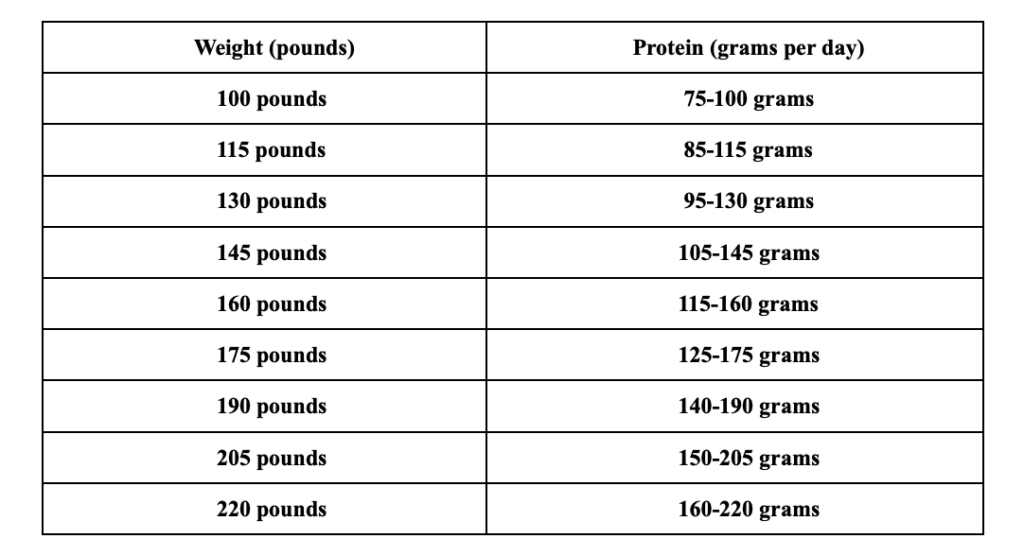
There is quite a range between the two values and so this is likely to create a bit of uncertainty surrounding how much you personally should actually get. To ease your mind, unless you are aiming to be a highly competitive bodybuilder or athlete it is unlikely the differences in the MGR range amount to much.
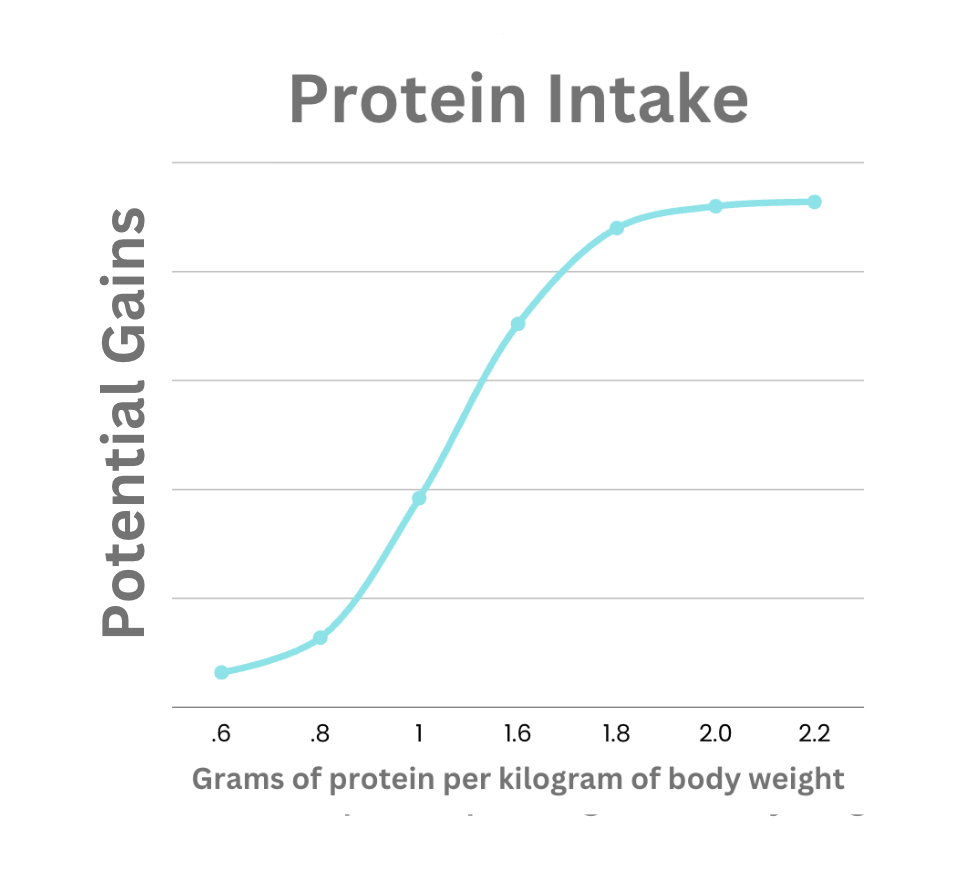
Why the RDA and why would you need more?
Protein amounts more than what the RDA values prescribe may seem counter-intuitive. If they are recommended, why would someone need more than what is recommended? The problem is not that the RDA value is useless, rather we need to consider what the RDA value is intended to serve. RDA values are designed around serving baseline essential needs. Consumption of the current RDA values for protein is based on the body’s need in order to function. Since you are likely looking to grow muscle, simply functioning isn’t the only thing that you are looking to accomplish. These essential needs come from the body’s inability to produce certain amino acids within the body, coined essential amino acids. So, the RDA values are important but if you are looking to grow muscle, you’re going to want to look to get in more than the RDA.
Essential vs Non-Essential? Is all protein created equally?
The short answer is no, not all protein is created equally. Protein contained in whey protein and peanut butter are dramatically different in their composition and bioavailability. Put simply, if you are listening to your grandma who tells you to eat peanut butter because it is high in protein, you’re missing the mark. There are 9 essential amino acids and 11 non-essential amino acids. As noted previously, the essential ones are coined as such because they are essential to get through your diet. So what does that mean for foods that are not complete in their amino acid profile? It could mean you may want to look to get in another protein source that has a more complete profile, to fill in the void. It is much like trying to play soccer and not having a goalie on the field. Adding another attacker doesn’t make up for a lack of a goalie, so you’re probably better off adding in a goalie. Similarly, if you are lacking in amino acids in a protein source it may benefit you most if you consume other foods that help to make the meal well-rounded.
The Vegetarian and Vegan Dilemma
It is not uncommon that vegans and vegetarians receive criticism for their ability to get adequate protein intake. Provided vegetarians and vegans are limited in their quality protein sources it takes some more creativity in your meal selections to consume sufficient amino acids. It would no doubt make it easier if they just ate some chicken by putting aside their moral concerns and ethics, but that probably isn’t a reasonable approach. Assuming we can’t convince people to put aside their feelings for the sake of massive arms, it is worth asking whether or not mixing the best combination of foods would be enough to circumvent the lack of animal-based protein sources. The short answer is probably. That’s right if you decide you’re going to live the life of an herbivore, you can do your curls and feel good about your choices and your arms. So if you do consume a vegan or vegetarian-based diet, what should you do? To make sure you are truly meeting the body’s needs to grow, it may be best to find your protein intake for the day in the higher-end range of the MGR while looking to get higher-quality plant-based protein sources and create well-rounded meals.
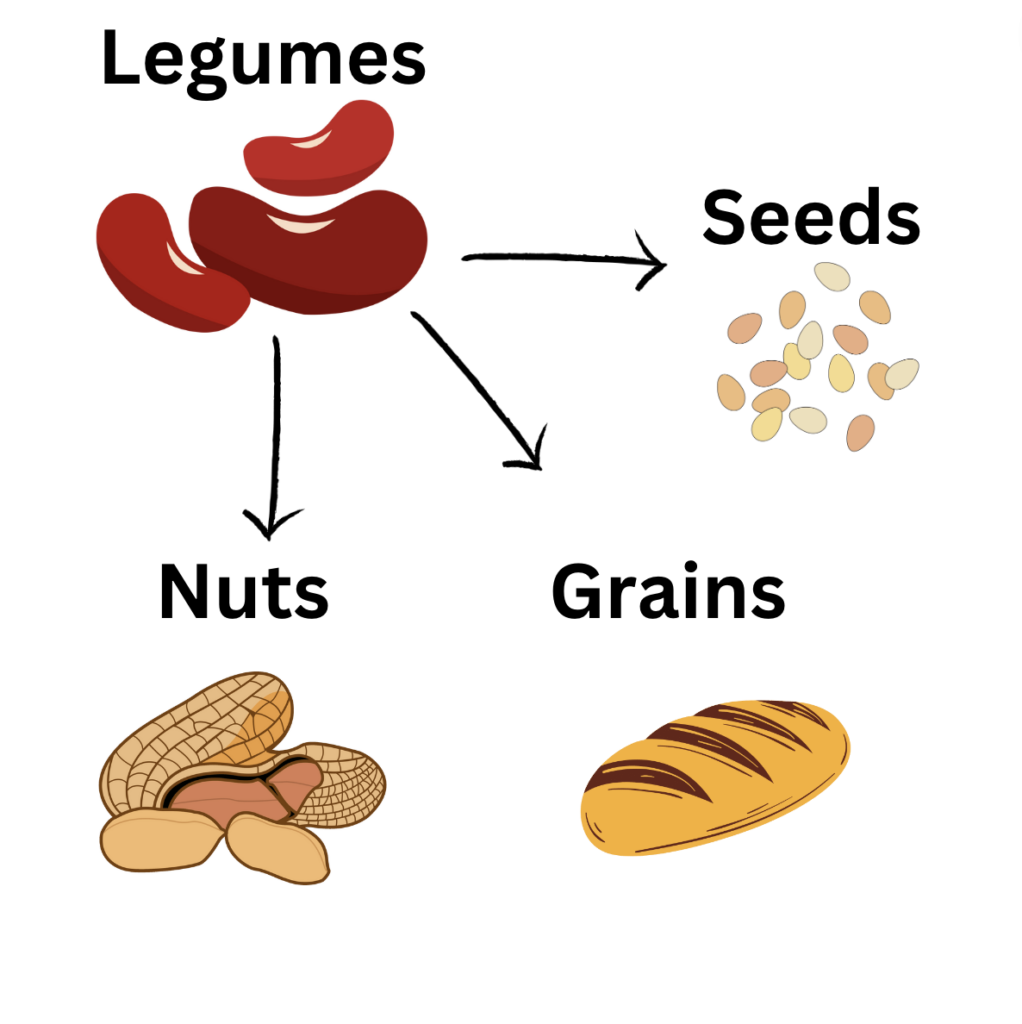
Protein is bad for the kidneys – false (with some exceptions)
If you were to eat on the higher end of the MGR range, is this a problem? It does not come as a surprise with these values coming in at a minimum of 2x the RDA values for protein consumption, that concerns about the quantities of protein may cause health problems. Vitamins and minerals that are consumed in too high a quantity above the RDA values can be incredibly detrimental to your health. In fact, this is where upper limits (UL) are established. The maximum intake one can consume without posing health risks for most people that fall within the general population. There is a tolerable upper limit for protein which is around 3.5 grams per kg of body weight. Which if you’re keeping track, for the 150-pound person we discussed earlier, that would mean this person could still consume up to 240 grams of protein a day and likely not encounter any issues. If you have ever experienced the luxury of going to a Brazilian steak house this might be a walk in the park to accomplish, but under normal conditions, it is incredibly difficult to consume that much protein. Fortunately, anything below that, so long as you have healthy functioning kidneys you have nothing to be concerned with. So where does this concern generally come from? The concerns generally arise because of the kidney’s burden in regulating the nitrogen, or more specifically the urea that comes with protein consumption.
Protein is a bit different in structure from carbs and fats. More specifically, they carry a central carbon, amino group(s), carboxy group(s), and a side chain. This makes them far more complex and as such need additional steps in breaking them down. These steps not only make protein far more energetically demanding to break down but come with some biproducts that in high concentrations likely wouldn’t be that great in the body. Through a cascade of reactions mostly done through the liver, urea ends in the kidneys where it is eventually passed onto urine. The high protein diets are thought to be problematic for those with kidney disease, and for those that have kidney disease, or only have one-half of the number people are usually born with, the burden may cause some problems with accumulating waste. This, however, is not a problem for those with normal functioning kidneys. While not a perfectly well-randomized placebo double-blind control trial, to my knowledge bodybuilders aren’t dropping dead or crowding the kidney transplant lists.
Concluding statements
Protein is a vital macronutrient for muscle growth, and consuming adequate amounts is crucial for achieving optimal results. While the recommended dietary intake (RDA) provides a baseline for general health, those who want to maximize their gains and likely their health should aim for protein intake within the MGR range of 1.6-2.2 grams per kilogram of body weight.
It is important to note that not all protein sources are created equal, and ensuring a complete amino acid profile is essential. Vegetarians and vegans can meet their protein needs by combining different plant-based protein sources to create well-rounded meals. Contrary to popular belief, protein consumption within reasonable limits does not pose a risk to kidney health in individuals with normal kidney function. While protein metabolism does generate waste products that the kidneys need to process, the kidneys can handle this efficiently. Concerns about high protein diets and kidney health primarily apply to individuals with pre-existing kidney disease or impaired kidney function.
Understanding the importance of protein, selecting quality protein sources, and consuming protein within appropriate ranges are key factors in promoting muscle growth and maintaining overall health.
What Next?
Join our free facebook group or add us on instagram (revivestronger) and ask your question there, I will respond asap. Or if you’re after more and want to take your training and nutrition to the next level, go and sign up for our coaching service.
One more thing…
Do you have a friend who would love the above?
Share this article with them and let me know what they think.
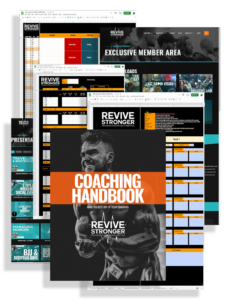
Coaching
I hope you liked this article. If you want to learn more or if you’re still unsure about how to apply the methodologies or the way to go about it, sign up for our coaching and benefit from first-hand experience and take your progress and knowledge to the next level.

Author – Danny Wirt
Danny is a former University professor teaching courses in exercise and sport science to various levels of undergraduate students. He is currently pursuing a terminal degree in Health and
Human Performance with previous experience in sport supplement research in graduate school and clinical exercise research at the University of Pennsylvania. Outside of his academic-related entanglements, Danny competed competitively in powerlifting and has a strong interest in physique-related sports. If he isn’t training, reading, or writing, he’s spending time with his wife and dog eating, relaxing, or going on walks.
We are a personal coaching service that helps you achieve your goals. We want you to become the best version of yourself.





